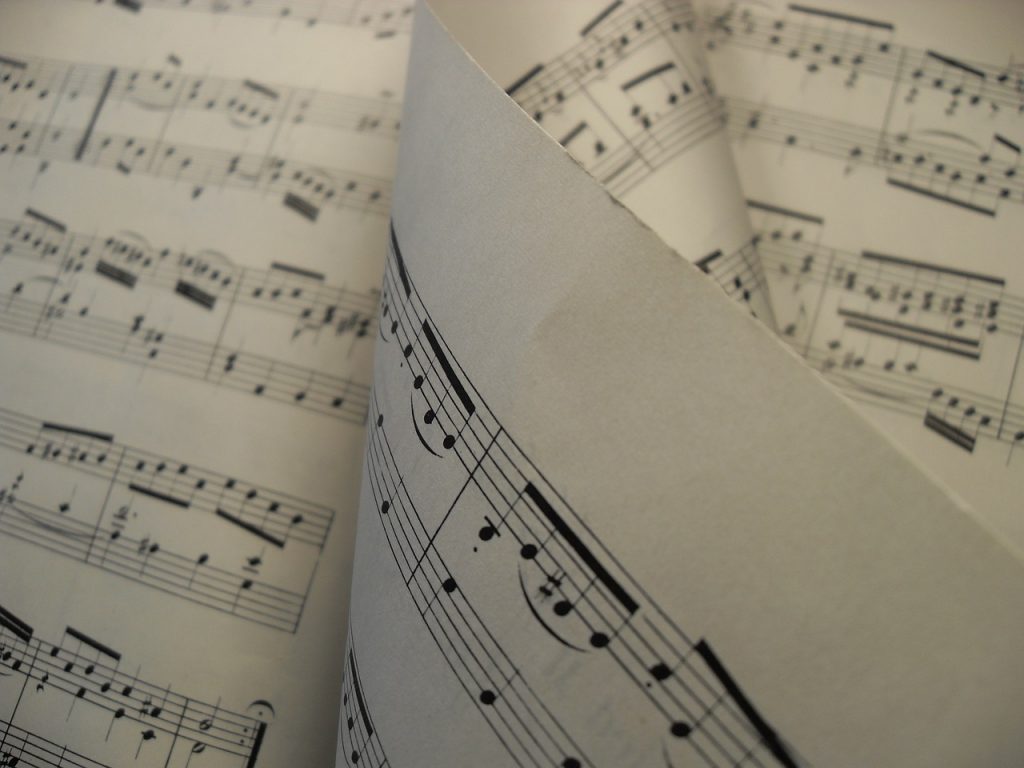Nothing Says "Back To School" Like A Symphony Someone Wrote As Homework
A good reason not to keep your old workbooks.

Say you have our dear Austrian friend Mozart, born in the mid-18th century, whose youthful energy and brilliance changed the course of classical music forever, or, well, right up until his untimely death in his early forties. Nearly half a century later, a Frenchman named Georges Bizet would accomplish a very similar feat in even less time. Bizet died of a heart complications when he was only 36 years old, and yet some would argue—me, I would argue, I’m arguing—that his mark on romantic music is just as significant as that of Mozart’s on classical.
Bizet will sound familiar to you, I imagine, because you are familiar with Carmen, the world’s most famous opera of, um, all time. And that really is the main reason to know Bizet: his output, given his short time on our planet, was not all too significant. Which is why it’s been such a delight to rediscover his dominant symphony work, his Symphony No. 1 in C Major. Bizet, however, would hate that I’m bringing this to you. In fact, he might hate that it was even ever published. His Symphony No. 1 was neither published nor played nor even discussed in his life; it came to light nearly 60 years after the composer’s death when his first biographer found it covered in dust amidst other family possessions. Bizet didn’t necessarily hide the symphony. It’s very likely he tucked it away because, seeing as how it was composed when he was only 17 years old, it was most likely homework from his time spent studying at the Paris Conservatoire.
I can’t tell if this rules or is bad, you know, digging up someone’s homework and publishing it to the masses. On one hand, I could see Bizet thinking about this the way some of us reminisce about our Livejournals, “that was the old me, this is the new me,” etc. On the other hand, sometimes I reread my papers from college and am like, “I’m… smart?” So who knows.
What we do know is that Symphony No. 1 in C Major (Bernstein, obviously, from 1968) is so much fucking fun. It does sound like a teenager wrote this, because it doesn’t begin to take itself too seriously in the slightest. Other symphonic works have attempted to capture a youthful tone, but this one really projects it, blasts it out in the opening seconds of its first movement, Allegro vivo. This is one of those symphonies whose central melody will worm its way into your ear and embed itself there. It’s so catchy. It’s a Top 40 hit. What I will say, with deep respect for Bizet, is that this whole thing—at least at the very beginning—does sound very Beethoveny-y. It’s trying to grasp onto a certain sense of joy, but it’s ultimately too shallow to have that lasting emotional effect. Which is fine! Really. Some music is just for fun.
It’s such a treat, however, to slip into the Adagio and feel something a little different. There’s a hesitance in its existence: you know how you’re either one of those teenagers who’s wild for bangers or one of those who cries and listens to power ballads? I think Bizet might have been the former. He pushes this Adagio outside of itself: the oboe solo at the end of its first minute is seductive and crawling. This won’t be a tragic Adagio, nor a mournful one. He finds really movement (pun 80% intended) within this piece. The constant pizzicato of the lower strings keeping the rest of the orchestra on track is delicate yet urging.
There’s not as much tonal whiplash, in turn, as the symphony heads into its Allegro vivace. Bizet at one point told Saint-Saëns that he was not cut out for symphonies: “I must have a stage––without that I am nothing.” Sorry, but I am here to call bullshit on that. Listen to how roiling this third movement is. You don’t need any kind of visual at all. It races along with speed and joy, like turning up the radio in your car. Even the B melody (at the 1:57 mark) is so sweet and funny. And then the piece does something I so fully love. At 2:29, it cuts out and then the cellos enter, just raging, dragging their bows along the strings with such force. This section is a dialogue between the woodwinds and the lower strings. It’s a side plot brought to life without any of the characters in front of you. I don’t know how you listen to this symphony and don’t come away from it fully in love with Bizet. The intent is so pure. He’s so full of life and opportunity and joy. This is teen music!!!
And if the third movement wasn’t enough for you, the final Allegro vivace is so completely fucking insane that you’ll have to be won over. It’s immediately so fast and the strings are deranged and I’m laughing, honestly, so hard, at a 17-year-old being like, “Yeah… this is what I’ll do for my homework.” There’s such a profound and charming confidence to this melody. I know it’s not fair to compare Bizet to Mozart but there is something so much more endearing about a teen prodigy still figuring it out to one convinced he already has. It is very easy to project a certain type of pretension to classical music, but this is the type of piece that ought to have universal appeal. It’s provocative in the best possible way. Bizet seduces you: he rides up on a skateboard and wants to show you a trick. And why not? It’s not half bad.
There is a corresponding playlist for all pieces discussed in this column here.
